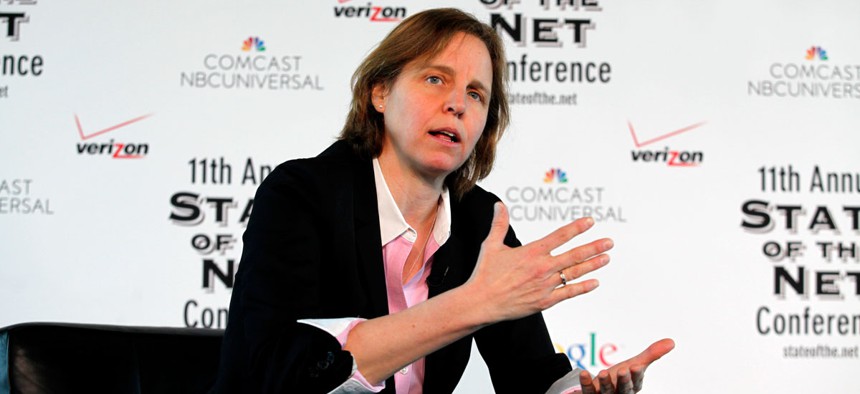Federal CTO: How Can We Be More like Estonia?

US CTO Megan Smith Flickr user Internet Education Foundation
Estonia is one of the most digital-friendly government in the world, with each of its 1.3 million citizens able to access everything from bank records to government services with the use of a single personal identification code.
America is still the strongest military power in the world and perhaps the most powerful beacon of democracy, but when it comes to digital prowess in government, the mantle undoubtedly belongs to Estonia.
Situated alongside the Baltic Sea and Gulf of Finland, Estonia is among the most digital-friendly governments in the world, with its 1.3 million citizens being able to access everything from bank records to government services with the use of a single personal identification code.
Much has been written about Estonia’s digital transformation – born of necessity – and while some of its efforts can’t be duplicated for a much larger nation, there is still plenty federal agencies can learn from this neighbor across the Atlantic.
“How can we be like Estonia?” asked federal Chief Technology Officer Megan Smith, “and get it done for a fraction of the price?”
Smith spoke Tuesday at an IT symposium organized by the Federal Chief Information Officers Council. She discussed three current focus areas of her office: tech policy, creating a digital and data-driven government and fueling an “innovation nation” with talent to fill the tech demand.
Estonia, she noted, is a “fully digital government” that relies on IT services shared across its various departments. The country abides by an “only once” policy, through which residents aren’t continually sharing their data with various government branches or departments. One can imagine an American equivalent in which John Citizen uses the same login to access tax records as he does to view veteran benefits.
Estonia, Smith said, is among the “D5” nations, those deemed the most most digital-friendly governments. The others are South Korea, the U.K., Israel and New Zealand. While the U.S. has a seat at the G8 table, our D5 status is pending.
Getting there, Smith said, is both a technological problem and a cultural one.
“Sometimes I say, ‘We are the ones we’ve been waiting for,’” Smith said. “We just really need to upgrade ourselves. It’s so punishing to come into some government teams, so punishing to use the IT we have been [using] in different spaces.”
For the U.S. to channel Estonia in digital governing, collaboration between agencies is going to have to be a focal point of tech efforts. In Estonia, the government is skeptical of funding separate, though similar, projects if agencies don't work together. Recently, Andres Kütt, the architect and adviser of the Estonian Information Security Authority, told a Washington, D.C., audience, “we don’t approve funding unless they actually talk to each other and come up with a something like a joint proposal.”
Unlike in Estonia, joint proposals are rare in the federal government today. The Government Accountability Office might look more favorably on the government’s $86 billion IT budget if billions were not spent each year on duplicative investments. Instead, IT acquisition was placed on its High-Risk List.
“The most important thing is we don’t cross-functionally collaborate when we are planning things as well as we could,” Smith said.




